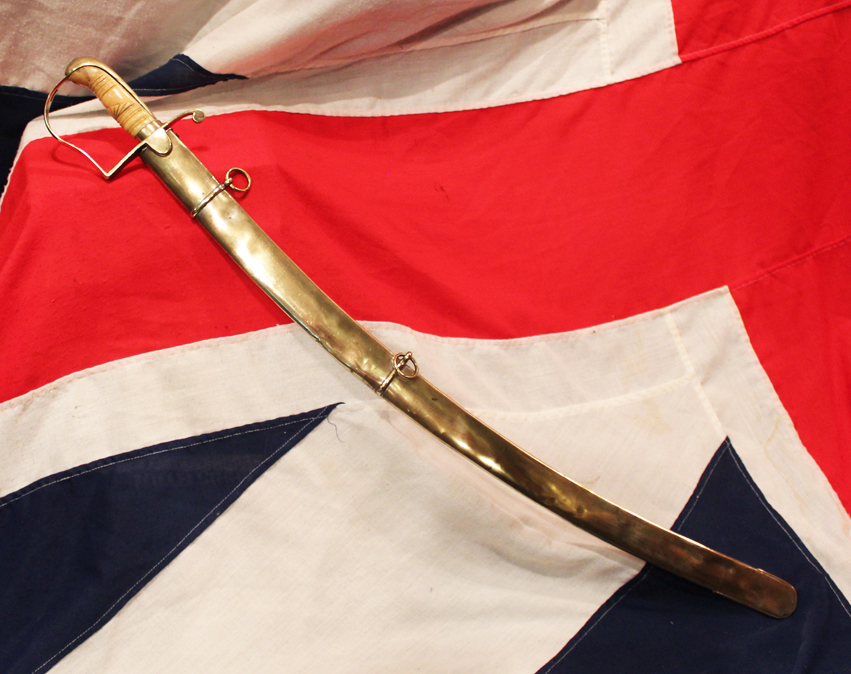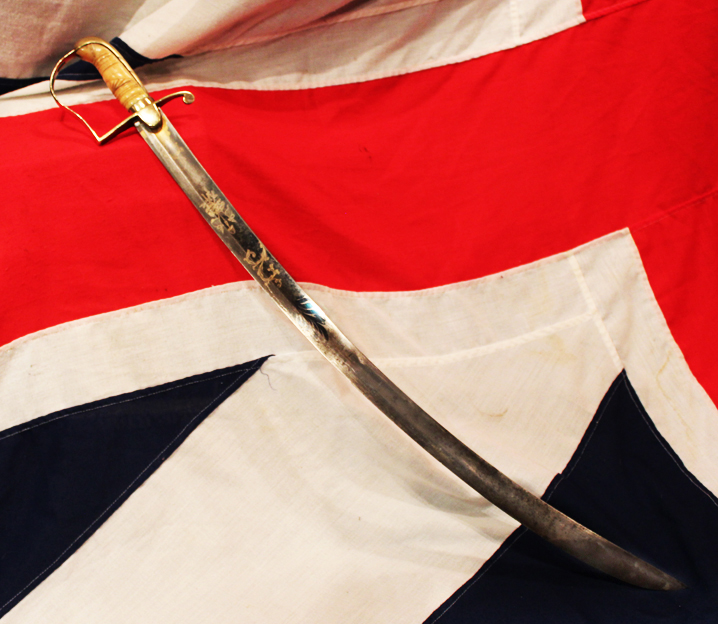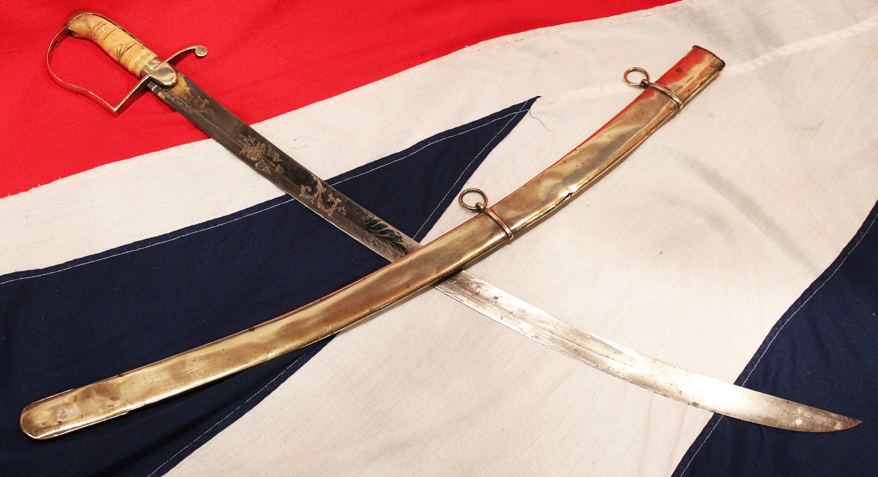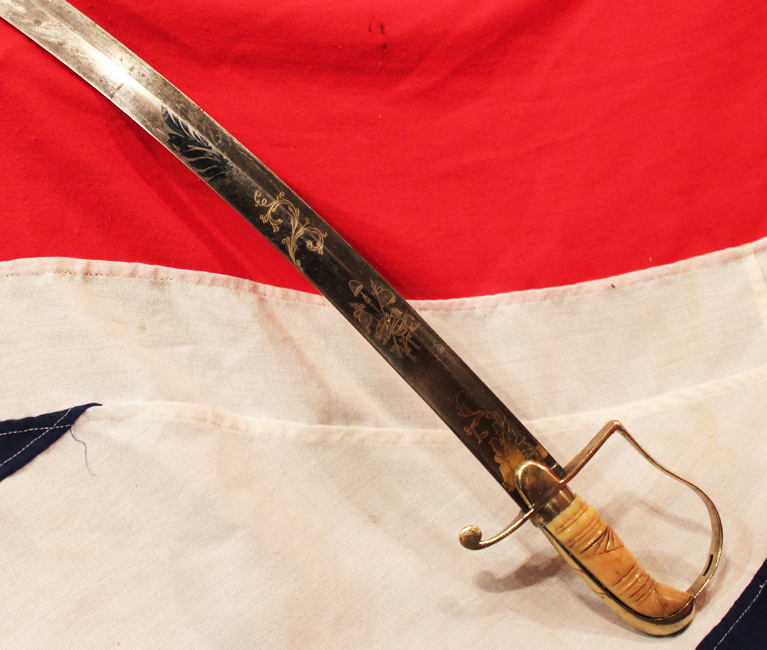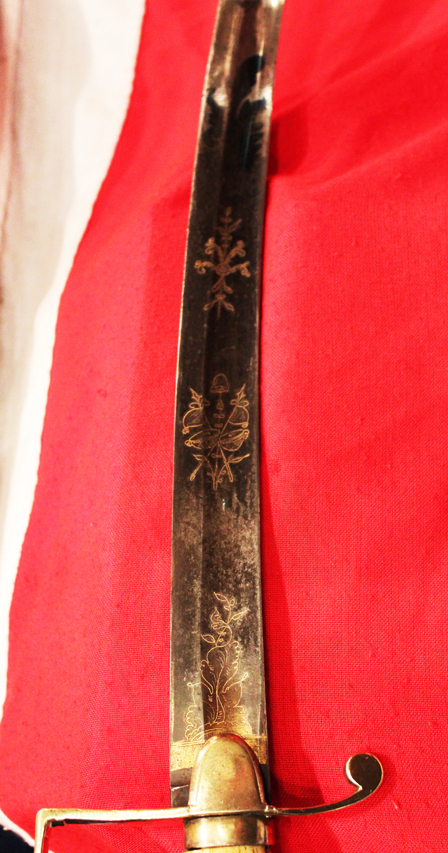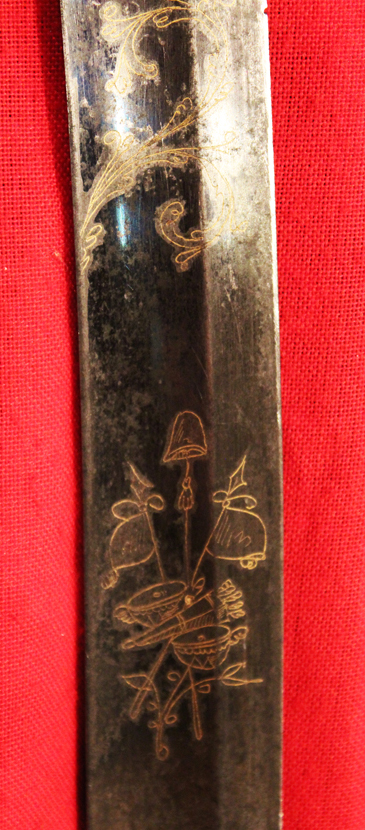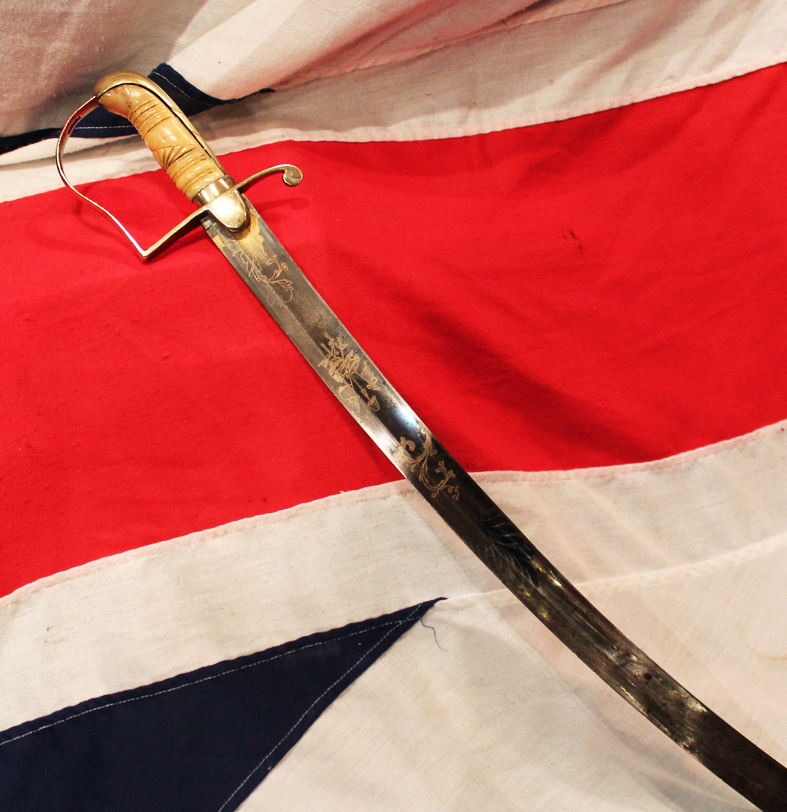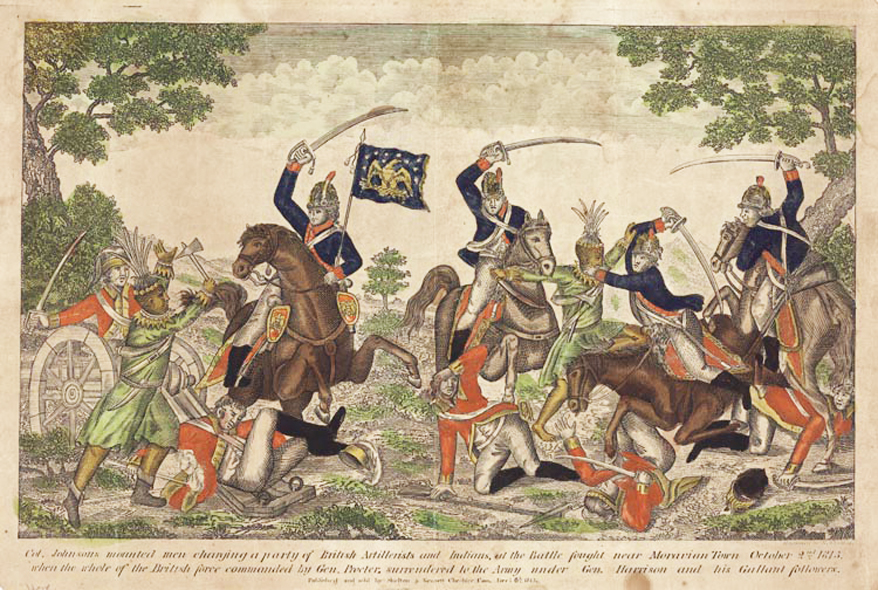A Stunning Officers Sabre Used in The War of 1812 Blue & Gilt American Dragoon/Artillery Sabre, Pattern of 1796
Traditional brass p hilt, pattern carved bone grip, all brass combat scabbard and fine blue and gilt blade. Almost identical to two early 19th century swords, numbers 56 and 57 [illustrated on page 41] that appear photographed in "American Swords and Makers Marks" by Cleg Donald Furr. This federal period sword is as good as any of the best of its type we have seen before, in either private or museum collections. It has the form shape, style and blued blade near identical to sword number 57, and the blued blade and carved bone grip also near identcal to sword 56. With brass combat scabbard, brass hilt, carved bone grip with fan and ribbed lines, traditional American style late 18th century light dragoon form blade, and used in the War of 1812. With wide swollen tip. The blue and gilt is very good with some wear and fading due to to use. Overall in super condition for age. Officers both regular and volunteers carried fighting swords very similar in form to those of the trooper version, though officer's swords show much of higher levels of finish and workmanship with the option of expensive and stunning blued blades such as this one. The mounted swordsmanship training emphasised the cut, at the face for maiming or killing, or at the arms to disable. This left masses of mutilated or disabled troops; the French, in contrast, favoured the thrust, which gave cleaner kills. A cut with the LC sabre was, however, perfectly capable of killing outright, as was recorded by George Farmer of the 11th Regiment of Light Dragoons, [all the British light dragoons carried the same form of blade as this sword] who was involved in a skirmish on the Guadiana River in 1811, during the Peninsular War against the French:
"Just then a French officer stooping over the body of one of his countrymen, who dropped the instant on his horse's neck, delivered a thrust at poor Harry Wilson's body; and delivered it effectually. I firmly believe that Wilson died on the instant yet, though he felt the sword in its progress, he, with characteristic self-command, kept his eye on the enemy in his front; and, raising himself in his stirrups, let fall upon the Frenchman's head such a blow, that brass and skull parted before it, and the man's head was cloven asunder to the chin. It was the most tremendous blow I ever beheld struck; and both he who gave, and his opponent who received it, dropped dead together. The brass helmet was afterwards examined by order of a French officer, who, as well as myself, was astonished at the exploit; and the cut was found to be as clean as if the sword had gone through a turnip, not so much as a dint being left on either side of it" The light dragoon blade is remembered today as one of the best of its time and has been described as the finest cutting sword ever manufactured in quantity. The War of 1812 was fought between the United States of America and Great Britain and its colonies, Upper and Lower Canada and Nova Scotia, from 1812 to 1815 on land and sea. The Americans declared war on Britain on June 18, 1812, for a combination of reasons? outrage at the impressment (seizure) of thousands of American sailors, frustration at British restraints on neutral trade while Britain warred with France, and anger at British support for native attacks along the frontier which conflicted with American expansion and settlement into the Old Northwest. The war started poorly for the Americans as their attempts to invade Canada were repeatedly repulsed; later in the war, American land forces proved more effective. The Royal Navy lost some early single-ship battles but eventually their numbers told and the naval blockade of the eastern seaboard ruined American commerce, and led to extreme dissatisfaction in New England. Following the American raid and burning of York (now Toronto), the British raided the Chesapeake Bay area and burned parts of Washington D.C. but were repulsed at Baltimore and withdrew. The Americans gained naval control of Lake Erie and Lake Champlain, preventing the planned British invasion of New York. The Americans destroyed the power of the native people of the Northwest and Southeast. With the defeat of Napoleon in 1814, and the stalemate on the battlefields, both nations agreed to a peace that left the prewar boundaries intact.
Code: 22448
2475.00 GBP

